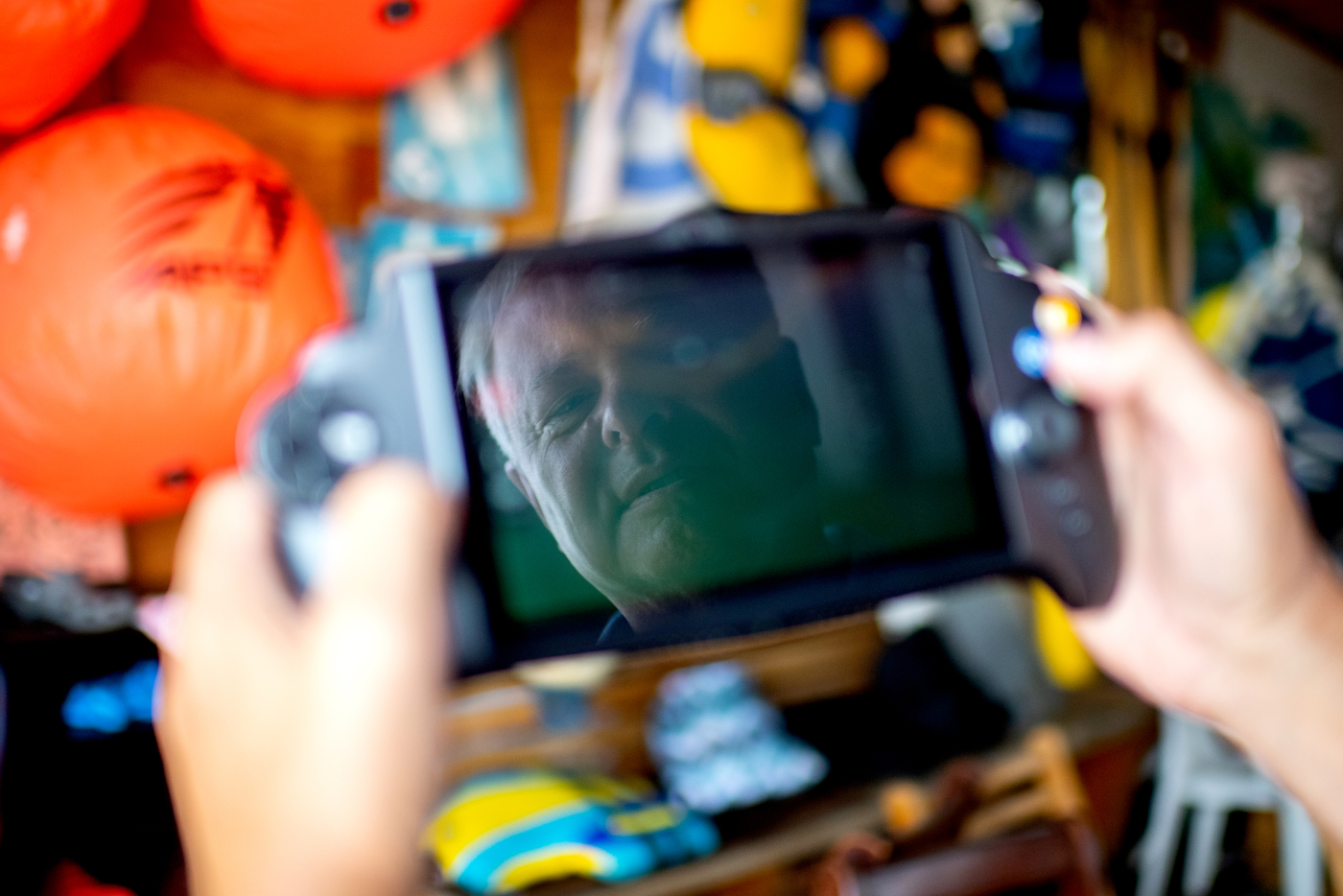The last thing Mark Patterson hears before his underwater robot embarks on a mission is a recording of his eldest child’s voice: “Glug, glug, glug! I’m going on a dive!”
Once the robot’s antenna slips below the surface, the expedition is no longer in Patterson’s control. “I program the mission, but it’s up to the robot to make good choices,” says Patterson, professor of marine and environmental sciences at Northeastern.
After a day’s work collecting information about a specific ocean ecosystem, the robot equipped with sensors and cameras, returns to shore, announced by Patterson’s youngest child in 5-year-old soprano: “I’m back on the surface!”
“I love when the robot comes home. I love hearing my kids’ voices,” he says.
Patterson developed Fetch, the autonomous underwater robot, in 1998 as a means to compile data about the ocean more efficiently than human divers. “You get a lot of bang for your buck with these robots,” he says. “You send them out for the day, and they come back with a huge pile of data. It’s exciting.”
Read more at News@Northeastern.
Photo by Matthew Modoono/Northeastern University.

